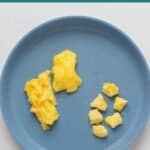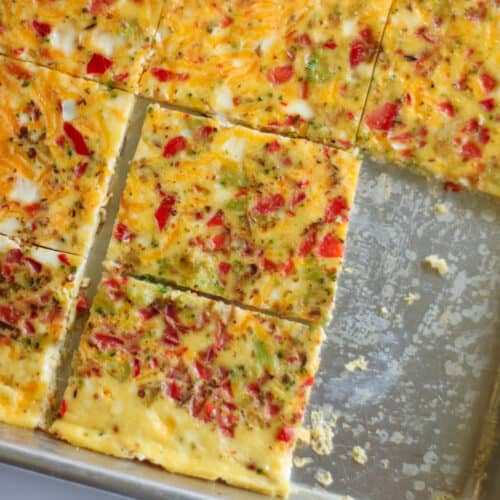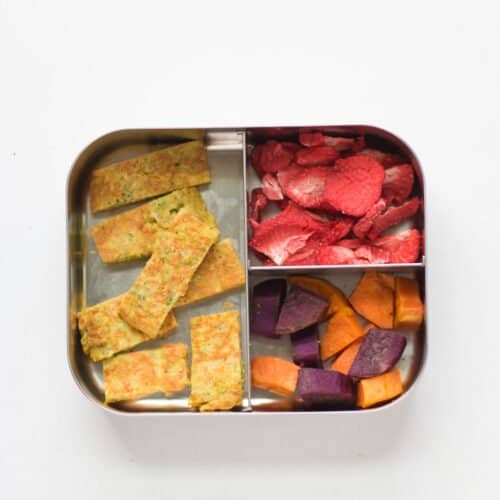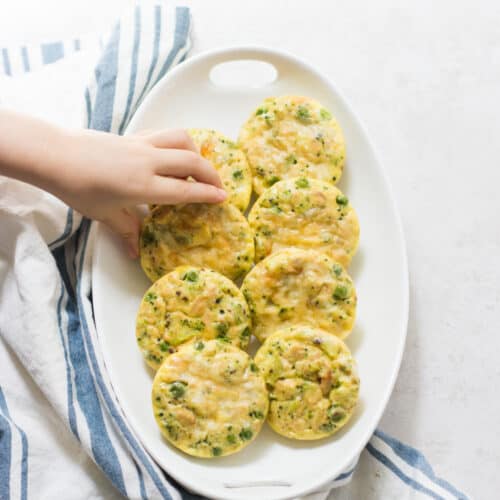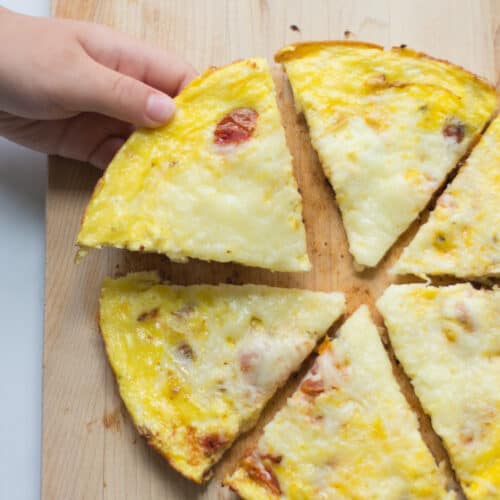This post may contain affiliate links. Please see our disclosure policy for more details.
Here’s how to make soft and fluffy scrambled eggs every time as well as fun variations to incorporate more variety into your child’s diet!
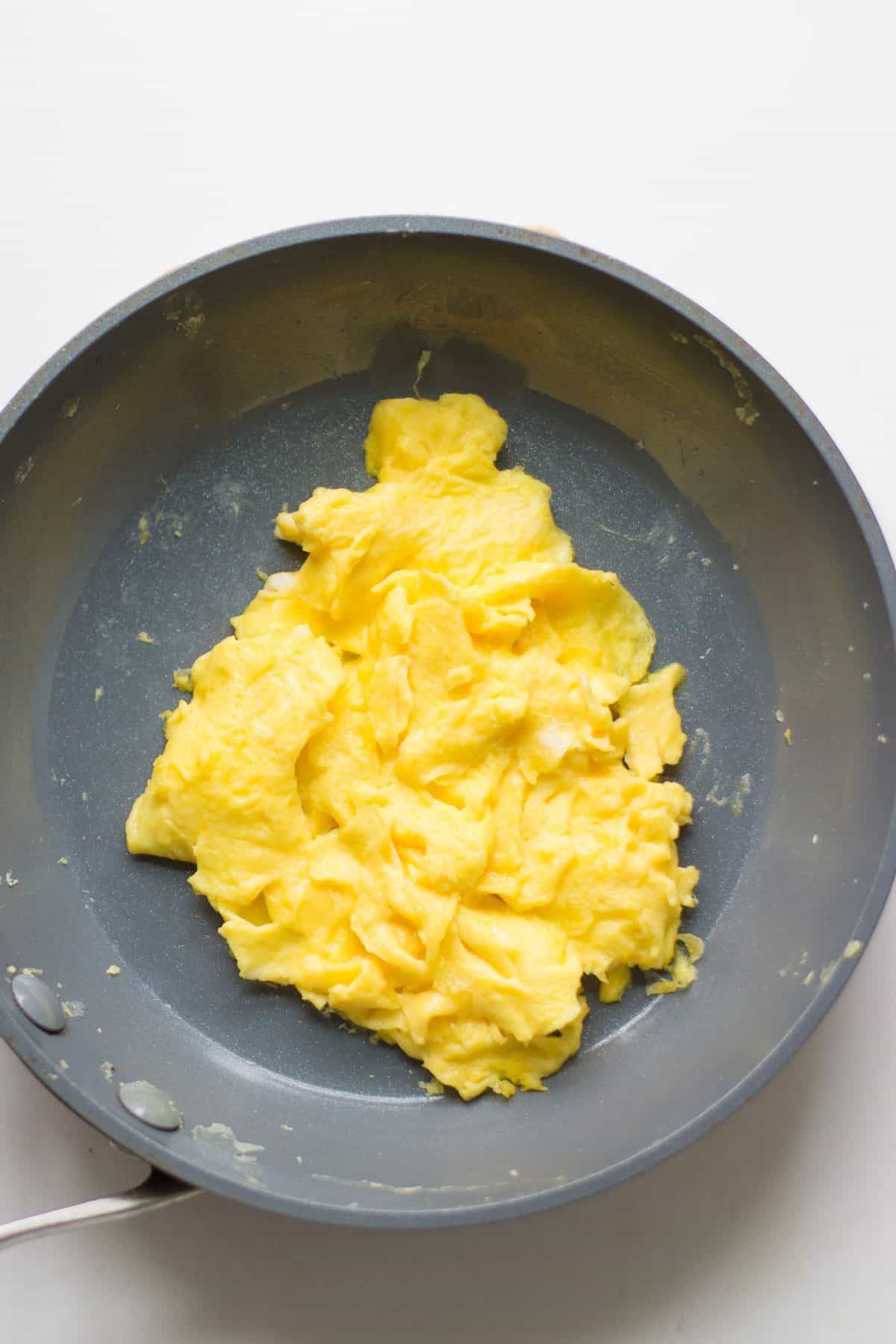
When can babies eat eggs?
Eggs can be offered to babies as soon as they’re ready to start solids, usually around 6 months. It’s important to remember that your baby is unique and that rather than going by the calendar, you need to make sure your baby is DEVELOPMENTALLY ready to start solids.
If you’re unsure, be sure to grab my FREE handout!
Here’s everything you need to know about introducing eggs to babies along with plenty of meal ideas and recipes!
Ingredients
Eggs – Any type of egg will work but pasture-raised ones are more delicious and nutritious and possess vibrant yolks.
Milk or yogurt – Adding a small amount of milk prevents the proteins in eggs from bonding too tightly together, resulting in creamier, softer, and fluffier eggs. Yogurt adds tanginess and extra creaminess.
Be sure to use Full-Fat to support their rapidly developing brain and central nervous system.
Butter or oil – You don’t need a ton but you need enough to coat the entire bottom of the pan. I am team butter all the way but feel free to use any oil of your choosing.
Step by Step Instructions
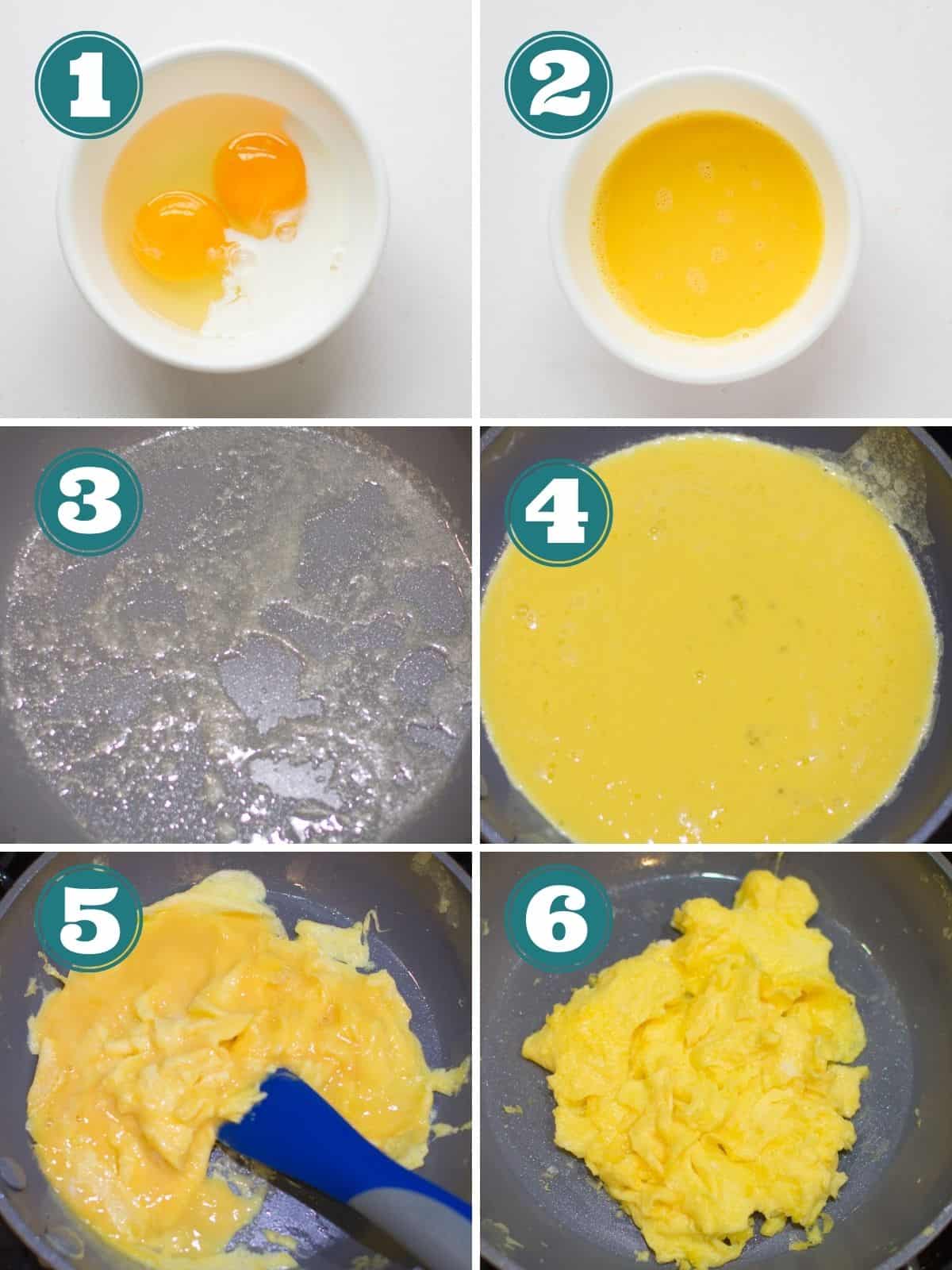
- In a bowl, add the eggs and milk.
- Using a whisk beat vigorously. The more you whip, the better.
- Melt butter or oil in a nonstick skillet over medium heat. Make sure it coats the entire pan.
- Add eggs. Allow the liquid egg to sit for 10 seconds or so.
- Gently scrape across the bottom and around the edges, pulling towards the center of the pan. Try not to break the curds too much.
- Remove from heat when the eggs are mostly set.
Tips for Success
- I recommend adding 1 teaspoon of milk per 1 egg.
- Ditch the fork and whisk the eggs REALLY well until uniform in appearance. This ensures that the egg yolks and whites mix together completely and adds air to the eggs, making them extra fluffy.
- Use a smaller pan. If the pan is too large, the egg will spread and become too thin, making it harder to create fluffy curds. An 8 inch pan for 2-3 eggs is perfect! This is what I use and LOVE it!
- Cook low and slow! Be sure to keep the heat at medium low to achieve those dreamy, rich and creamy curds. Otherwise, you’ll end up with rubbery eggs.
- Use a silicone spatula – will allow for easy swirling and sweeping the eggs as they cook. If you are using a nonstick pan, it won’t damage the coating either.
- Wait 10 seconds or so after adding the eggs to the pan to allow for the edges of the eggs to set slightly. This will help in developing those beautiful large soft curds.
- Be sure to take carryover cooking into consideration. Take the pan off the heat before your eggs are finished cooking.
- If the top of the eggs seem too runny, turn off the heat and cover the pan for a minute or so.
How to serve to Babies
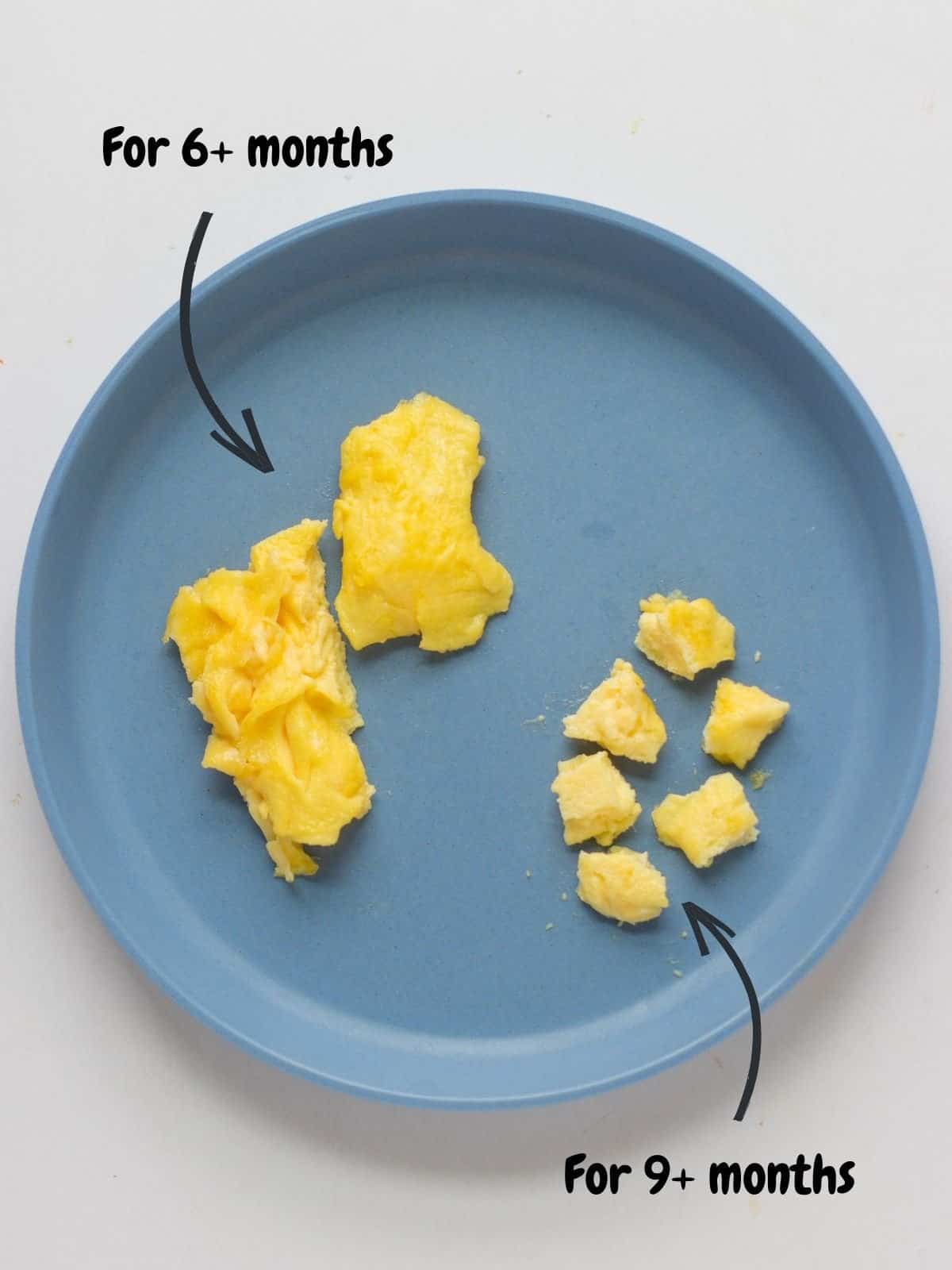
For 6-8 month old babies, offer strips of scrambled eggs (kind of like omelette fingers) so they can grab with their palms.
Once their pincer grasp develops, usually around 8-9 months, you can offer bite-sized pieces.
How to Serve the Right Size and Texture for Babies
Fun Variations
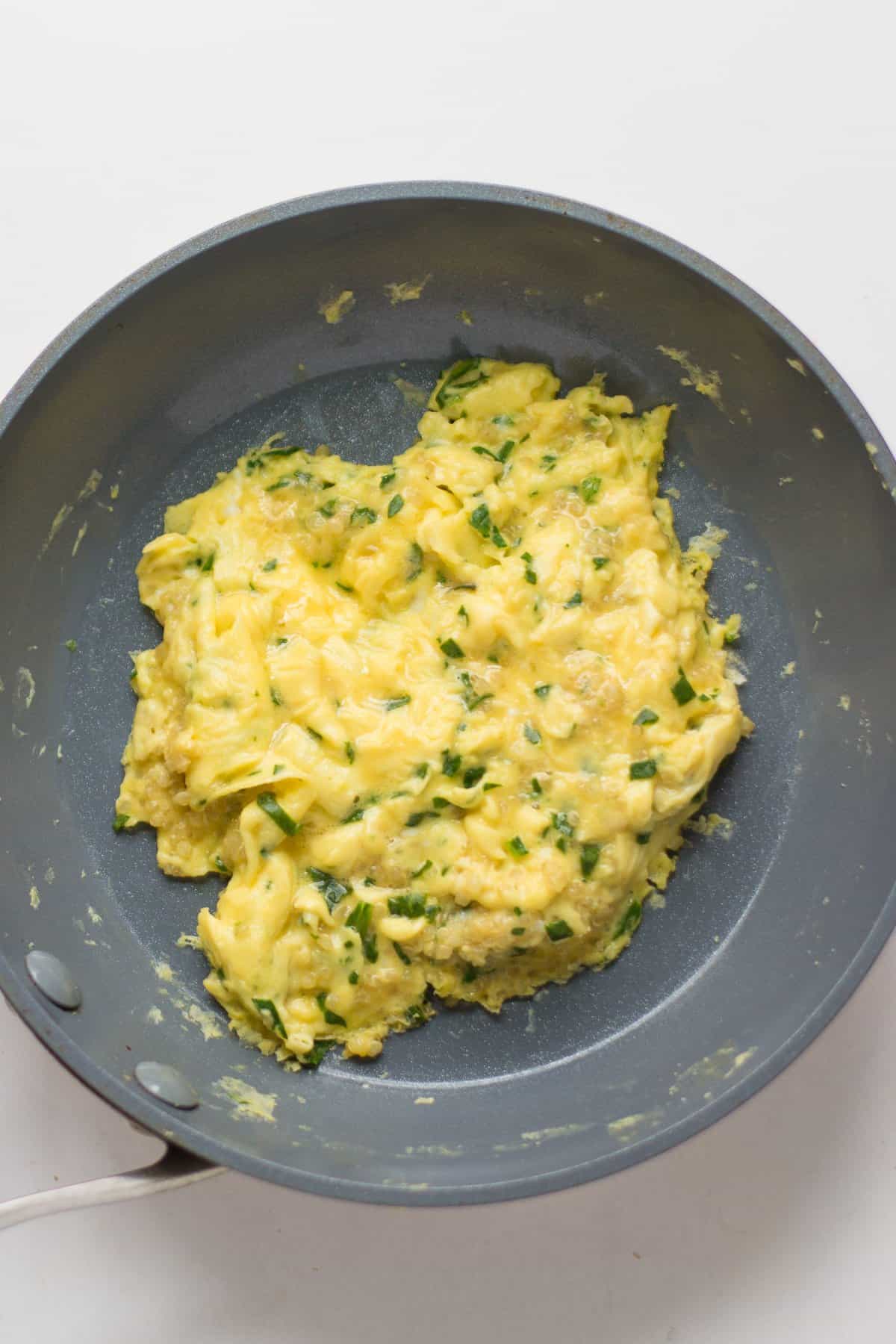
You can certainly serve plain scrambled eggs or add in whatever ingredients you have on hand. This is a great way to incorporate variety and repurpose leftovers.
Simply add them to beaten eggs and cook.
Important Tip: Don’t go overboard with the add-ins. Keep it simple and small in quantity. Otherwise, the eggs will get too wet and you’ll run the risk of overcooking. 1 to 1 1/2 tablespoons for 2 eggs are plenty.
Some examples:
- Finely chopped vegetables – spinach, broccoli, carrots, tomatoes, etc.
- Quinoa – such a brilliant way to prevent tiny grains from flying everywhere. If you’ve served it before, you know what I mean.
- Yogurt
A Real Life Example
Baby’s Plate
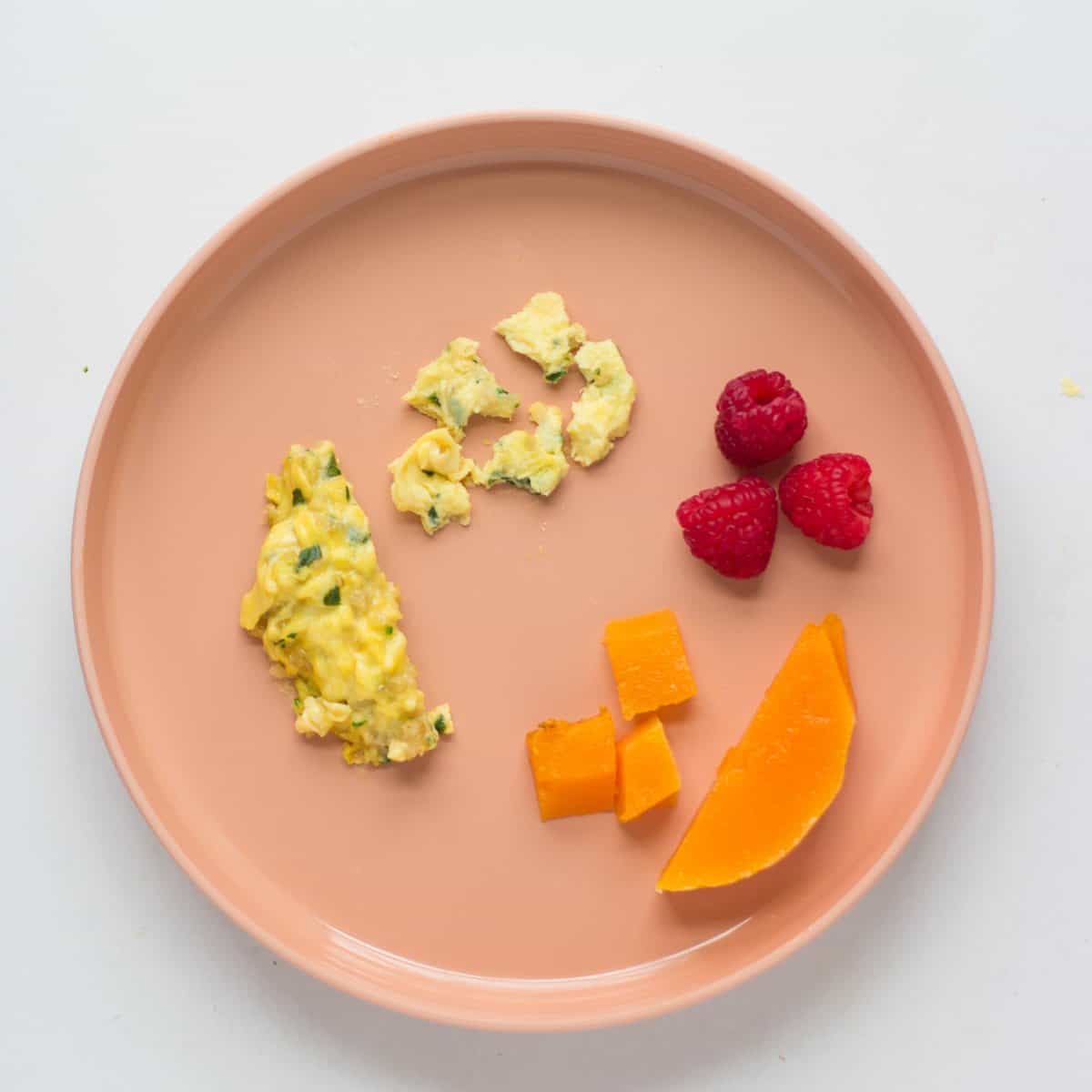
This is an example of a 9+ month old plate. While you can cut food into bite sized pieces once the pincer grasp develops, I suggest continuing to offer larger pieces so they can practice taking bites from early on.
If you’re looking for a non-toxic, suction plate, I can’t recommend this plate enough.
Here’s how to cook butternut squash!
Toddlers
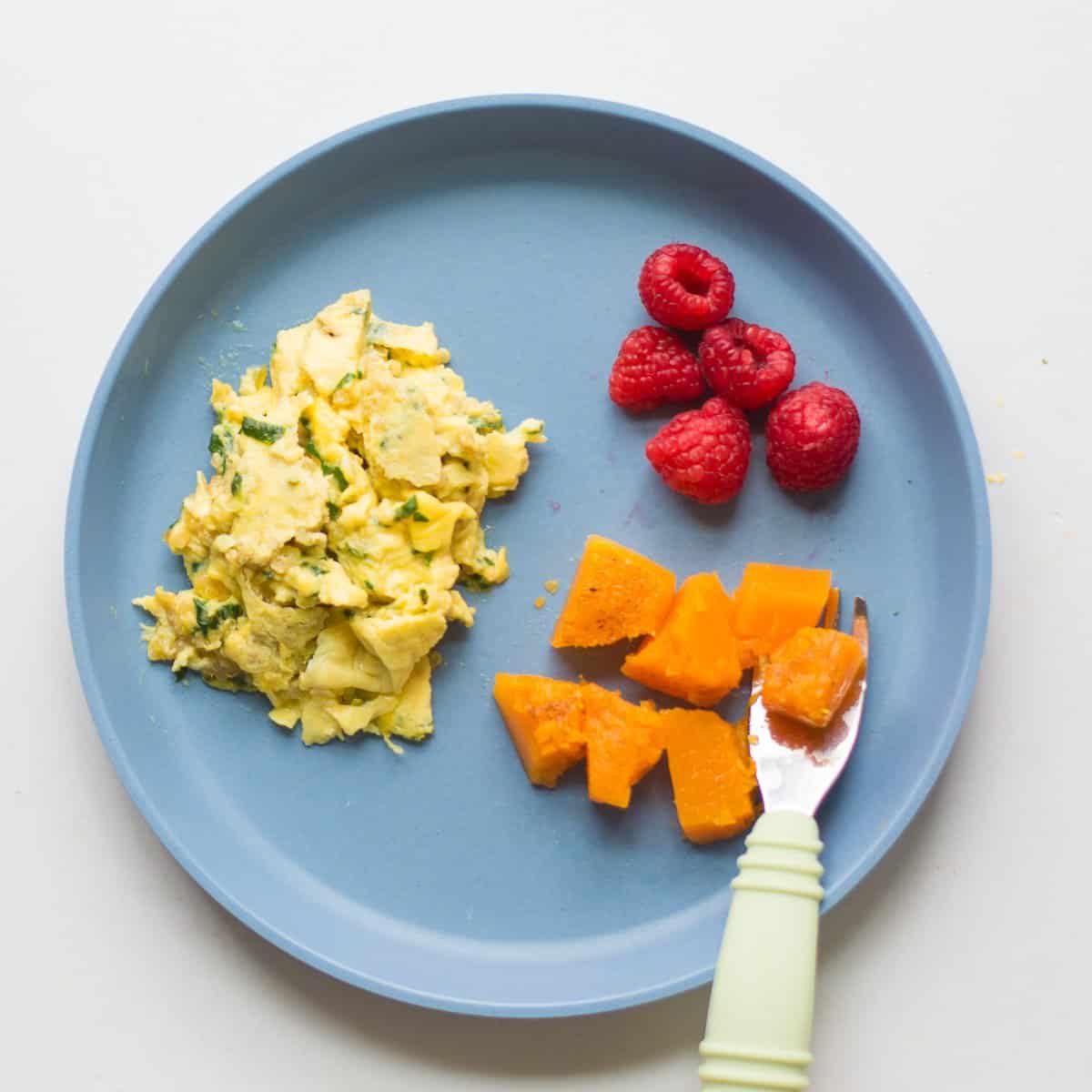
When making for toddlers and older kids, you can break up the egg curds towards the end of cooking.
And for fussy eaters, too much food can be overwhelming. Start with less and offer more if your child asks for more.

Is your toddler becoming picky?
Arm yourself with these strategies that will transform your mealtimes!
Did you make this recipe? Leave a rating below and let me know how you liked the recipe! Your feedback means so much to me!
More Egg Recipes to Try
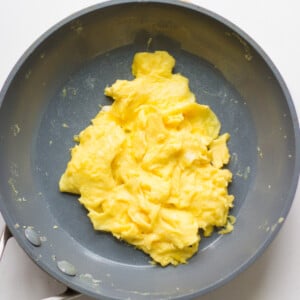
Soft Scrambled Eggs for Baby
Equipment
Ingredients
- 2 eggs
- 2 teaspoons full fat milk or yogurt
- butter or olive oil
Instructions
- In a bowl, add the eggs and milk. Using a whisk, beat vigorously until uniform in appearance. The more you whip, the better.
- Melt butter/oil in a nonstick skillet over medium heat. Make sure it coats the entire pan.
- Add eggs when the butter begins to bubble and foam or when oil starts to shimmer. Reduce heat to medium low.
- Allow the liquid egg to sit for 10 seconds or so. Using a silicone spatula, gently and slowly scrape across the bottom and around the edges of the pan.
- As the eggs cook, pull them towards the center of the pan. The surface should be slightly wet, not runny. Try not to break the curds. Remove from heat.
- Break up the scramble to your baby's age-appropriate size.
Notes
- I recommend adding 1 teaspoon of milk per 1 egg.
- Ditch the fork and whisk the eggs REALLY well until uniform in appearance.
- Use a smaller pan. An 8 inch pan for 2-3 eggs is perfect!
- Cook low and slow! Be sure to keep the heat at medium low to achieve those dreamy, rich and creamy curds. Otherwise, you’ll end up with rubbery eggs.
- Use a silicone spatula – will allow for easy swirling and sweeping the eggs as they cook. If you are using a nonstick pan, it won’t damage the coating either.
- Wait 10 seconds or so after adding the eggs to the pan to allow for the edges of the eggs to set slightly.
- Be sure to take carryover cooking into consideration. Take the pan off the heat before your eggs are finished cooking.

